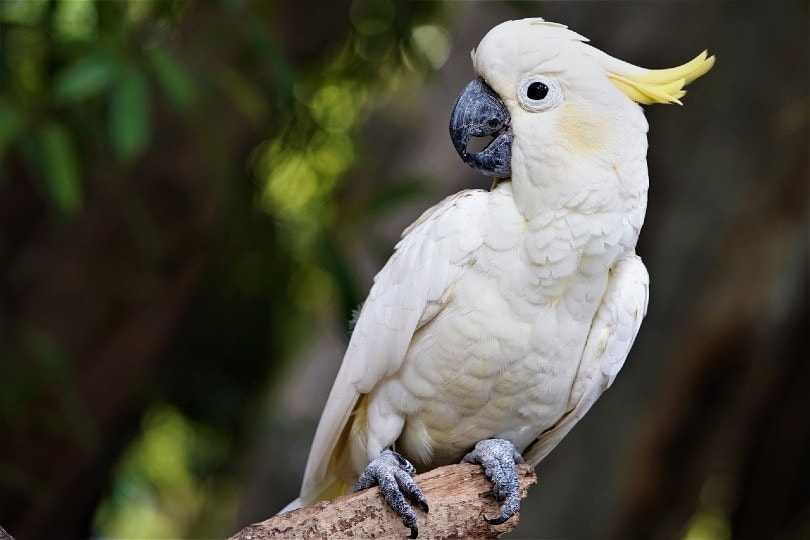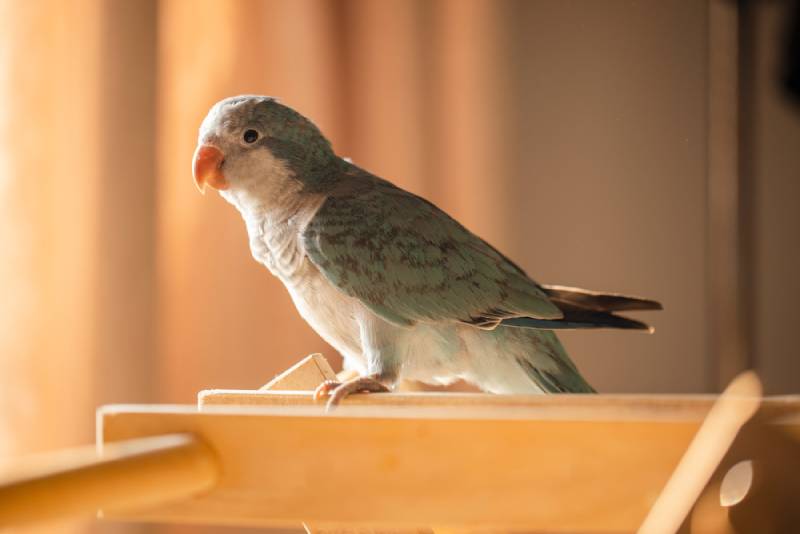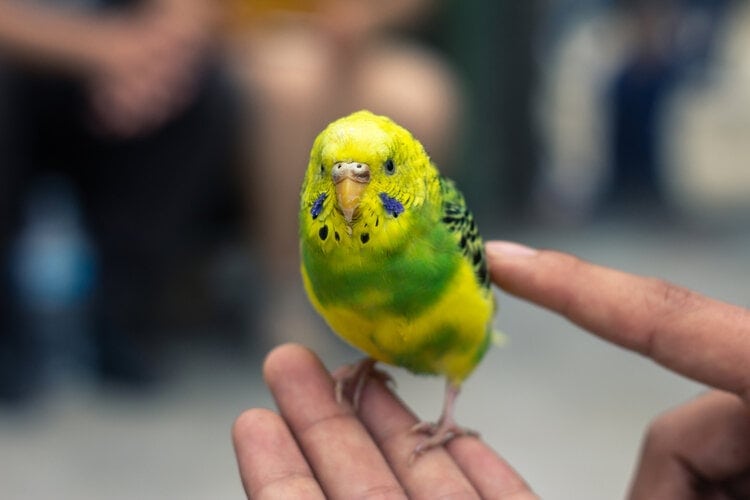Do Parakeets Mate for Life? Vet Reviewed Mating Facts
By Jessica Kim
Updated on
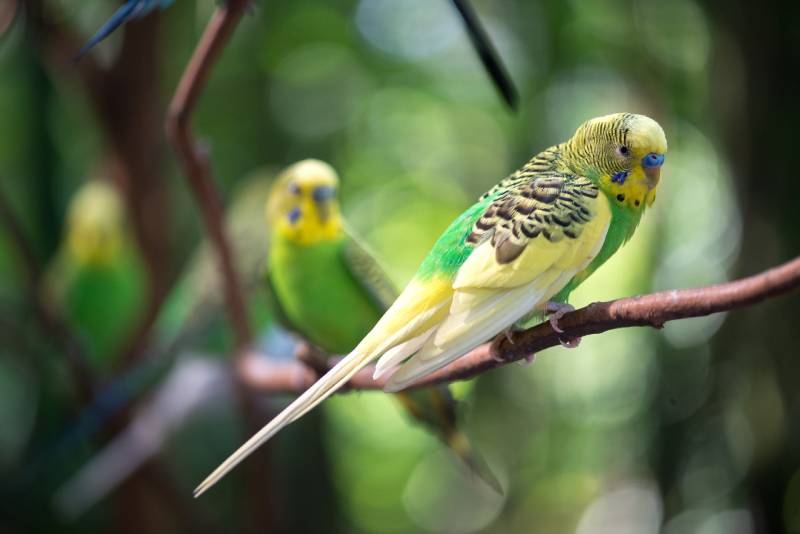
Parakeets are small species of parrots that are extremely popular pet birds. It’s often recommended for parakeets to live in pairs because they’re known to be very social and don’t do well being kept alone. These birds are known to be monogamous while they raise their young, however, they don’t necessarily mate for life. The social structure of these delightful birds are more complex than their mating habits, and it’s important to understand their behavior before you decide to bring home a pair of parakeets.
What Are Parakeets?
Have you noticed that there seems to be a range of different answers to the question “What Is A Parakeet?” Depending on who you speak to, the term parakeet may describe a long list of small parrot species, cockatiels, or budgerigars. This confusion makes it far more difficult to answer other questions about these sweet and diminutive birds.
The Encyclopedia Britannica describes parakeets as “seed-eating parrots of small size, slender build, and long, tapering tail”, and includes species such as the Australian rosella (Platycercus icterotis icterotis), rose-ringed parakeet (Psittacula krameri krameri), and budgerigar (Melopsittacus undulatus), but not cockatiels. Interestingly, budgerigars, or budgies, as they are affectionately known, are often mistakenly called lovebirds! Lovebirds (Agapornis spp), on the other hand, are actually parrots, and are more commonly known as Peachfaces or Masked Lovebirds.
All parakeets are parrots, but not all parrots are parakeets! Today, we are going to focus on budgerigars – the Australian native parakeet that has become the third most popular pet in the world.
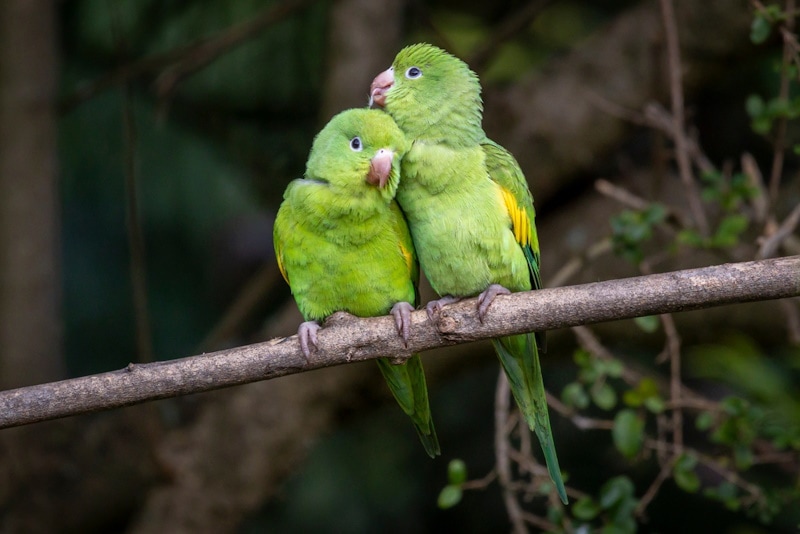
Parakeet Mating Habits in the Wild
It can be difficult to tell female and male parakeets apart. However, there are a few subtle signs to look for. In general, male and female parakeets have distinct calls; females tend to stick to a small selection of sounds, while males are often more vocal. When looking for a mate, a male parakeet will make calls that sound similar to a female parakeet’s call.
Once a female parakeet and a male parakeet choose each other as mates, they maintain a monogamous bond and will not seek other mates while they care for their young. They’ll often share roles while they build their nest and raise their chicks. The parakeet incubation period is around 18 days, and the chicks stay in the nest for around 5 weeks.
Once their chicks mature and leave the nest, the couple may not stay together and can choose a different mate during their next mating cycle. However, one research study has shown that some types of female parakeets can remember their mate’s call for up to 180 days, and tend to prefer the sound of their mate if they hear it within this timeframe.
Do Pet Parakeets Need Mates?
Many people believe that budgies are low-maintenance, entry-level birds, but parakeets actually require just as much care, attention and social interaction as their larger relatives. They’re intelligent birds that enjoy playing with toys, but also crave quality time with their humans and other birds.
Not all parakeets need a mate, but they are much more content when they live with one or two other parakeets. In the wild, budgies live in large flocks, and are very vocal, social birds. If you know that you won’t be able to give your pet a few hours of attention every day, it’s often a good idea to introduce them to one or more other budgies. Just keep in mind that when two parakeets bond together, there’s a good chance that they won’t grow a close bond with humans. You can expect to put in extra effort to tame your birds when they’re living in pairs.
It’s also important to note that not all parakeets that are paired together will choose each other as mates, so, there’s no guarantee that your pet parakeets will breed if they live in the same enclosure, but you do need to be prepared for the fact that they might!

What Happens When a Parakeet Loses Their Mate?
Parakeets that lose their mate will often go through a mourning period. They may be less active or confused when they no longer see their mate. It’s important to be extra gentle and affectionate with your parakeet during this time. Try to stick to their daily routine as best as possible, as sudden changes can cause anxiety or stress in your bird. Make sure to spend extra time with your parakeet and encourage them to eat some treats. You can try buying them new toys to help keep them active.
Keep in mind that some parakeets may become agitated more easily after they’ve lost their mate, so be on the lookout for signs of irritation or stress, and give them space if they’re acting out. The grieving period can last between a few days to a few weeks. Once your parakeet starts returning to their normal behavior, you can consider bringing home a new friend for them.
Do Parakeets Talk?
Parakeets can learn to mimic sounds and human speech, but are less likely to do so when kept with other birds. Some people keep these little parrots on their own to encourage them to talk, but this is not necessarily in the best interest of these social birds.
Conclusion
Parakeets don’t mate for life, but they’ll remain monogamous while they raise their young. Not all parakeets that live in the same enclosure will become mates. However, it can still be very beneficial for them to have housemates because they’re naturally social birds. Even if they don’t choose each other as mates, they can still form a strong bond and enjoy each other’s company.
Featured Image Credit: Pe3k, Shutterstock


